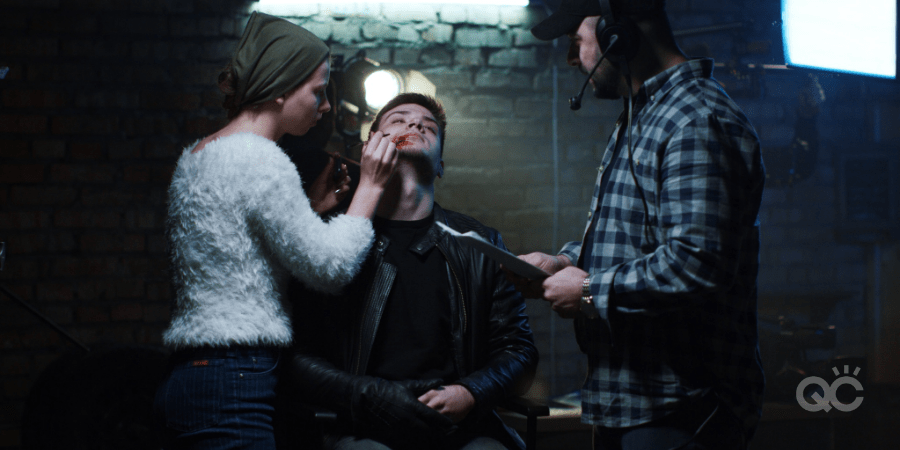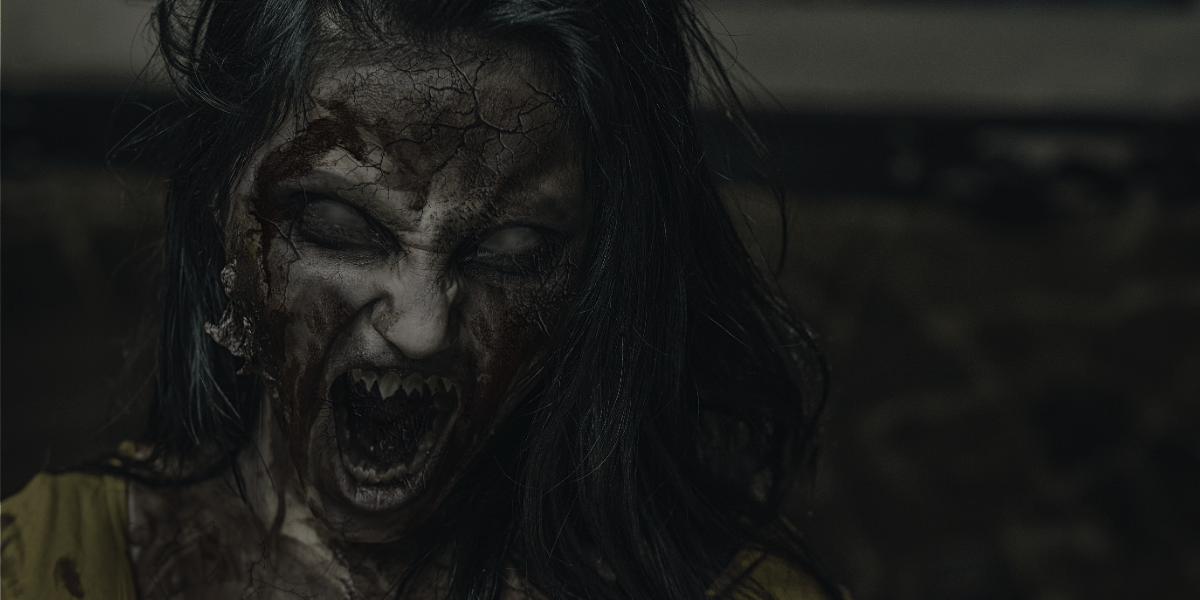Gabrielle Rivera is a QC Makeup Academy graduate and professional makeup artist. To see more of her work, visit her Instagram here. Today, she draws on her professional expertise – as well as her experience in QC’s Special Effects Makeup Course – to share 3 of the best ways to create a Special FX character, based on a script.
One of the most exciting (and slightly nerve-wracking) moments as a makeup artist is when you’re presented with the opportunity to create a Special Effects character from a script. This is your opportunity to apply what you’ve learned from:
- Your Special Effects makeup schooling
- Your experience working in the field
- Your creativity
It’s critical that you produce effective, accurate results. Without you, the writer’s vision of this specific character can’t be brought to life!
But where do you begin? Here are a few key points to consider when creating a Special Effects makeup look, based on the character in the script!

As an avid movie watcher, one of the first things I typically comment on when I see other people’s work is the realism of a look.
For instance, is the makeup realistic? Is the overall appearance applicable to both the setting and time period of the film?
When characters have features and/or qualities that stand out from the time period, I personally become less intrigued by the makeup and more distracted. The last thing you want to do as a Special Effects makeup artist is pull the viewer OUT of the experience!
Research, research, research!
When creating a character from a script, the best thing you can do for yourself is to conduct research about the:
- Time period
- Setting
- Physical characteristics
- Qualities and personality traits of the character being described
Let’s look at one example… Say that the setting of the story takes place in a Victorian era. It logically follows that the Special Effects makeup should accurately reflect this time period. This could mean a pale base, bright blush, deep colored lips, etc.
Alternately, if you see in the script that the character has been infected by a disease, the makeup should age and worsen gradually. You need to give the realistic illusion that the character is deteriorating as the story progresses.
So, you MUST focus on both consistency and continuity in this kind of look!
You might start this character’s Special Effects makeup by creating a slight discoloration in the skin, as well as under the eyes. Gradually, you may then add darkened veins, or small areas of bumps, to indicate that there is an infection.
In this age of technology, use all resources to create accurate representations of these real-life components (such as bruising, burns, cuts, scratches, bullet wounds, and deformities). Ensuring that you maintain continuity and realism in your character makes them way more realistic and believable!

What Special Effects Category is it?
When people think of Special Effects makeup and characters, they tend to automatically jump to the idea of traditional “monsters”. But this is just a minor portion of a much larger world!
In reality, Special Effects makeup and designs fall under several categories that can be used to your advantage.
Monsters that go bump in the night is a very common category when people think of Special Effects makeup. However, this genre in-and-of-itself has many subcategories that can help you determine where your character best fits.
Here’s a quick breakdown:
1. Slashers
Think of your classic Freddy Krueger, Jason Voorhees, and Michael Myers slasher characters here. If the character in the script fits this slasher paradigm, your first thought should be what you can do to help make them stand out from the rest!
2. Paranormal
This category would include ghosts and spirits. Now, you might be thinking, “Aren’t these things invisible to the naked eye?”
While this is true in some cases, there are plenty of classic films – such as “Thirteen Ghosts”, “The Shining”, and entire “The Conjuring” universe – that all do phenomenal jobs of bringing apparitions to life in a way that stays realistic.
3. Creatures and Extraterrestrial
Another popular Special Effects category is the one dedicated to creatures from the beyond. Some commonly known examples are:
- Frankenstein
- The Lochness Monster
- Aliens
- And so much more!
Depending on what the script calls for your character, you may need to tap into a more creative side. This will help you bring to life a creature that has never been seen before.
Pro tip: If you’re creating a character that’s not necessarily from this world, a good trick is to use features of animals as a starting point for your look!

4. Gore
Aside from classic common horror movie classic tropes, Special Effects character makeup also includes the gory side of makeup. This typically includes creating:
- Bruising
- Cuts
- Scrapes
- Lesions
- Weapon wounds
- And more!
When creating gore Special Effects makeup looks, one of the most important things you need to do is research (as mentioned in tip #1). Your Special Effects makeup should look as realistic as possible in order to help support the script.
You also need to pay close attention to the timeline of the movie when creating gore Special Effects looks. For example: if a character was in a car crash a week ago, the bruising will not be as bright as if it just happened.
Similarly, the coloring needs to accurately reflect the age of the bruises. As well, any cuts the character received would not necessarily be bloody, but rather, starting to heal.
Collaboration and Vision
Lastly, one of the single greatest ways to create a Special Effects character look from a script is to collaborate with the other cast and crew members working on the project, such as:
- Hairstylists
- Wardrobe designers
- Actors
- Producers
- Directors, etc.
Working together to bring to life a complete character that fits the vision of the script is vital! Think of it the same way you would with regular makeup: in addition to the makeup, the hair and/or clothing can be the factor that makes or breaks the look!
Just like with the Special Effects makeup, the character’s clothing and hairstyle(s) should be appropriate to the time period and story setting. Every element needs to work together to help keep your character realistic.
Not only should you consider the character’s clothing and hairstyles when developing your Special Effects makeup look – you should also consider what lifestyle and social status the character has (if applicable).
All of these smaller components are what will be combined to ultimately create a character that fits the script to a T!

Remember: putting effort into addressing all of these fine details will also help you, as the artist, stand out from others. By mastering the art of creating a Special Effects character look based on the script you’re given, you’ll be able to not only make a lasting impression, but even increase your chances of being booked for future projects!
